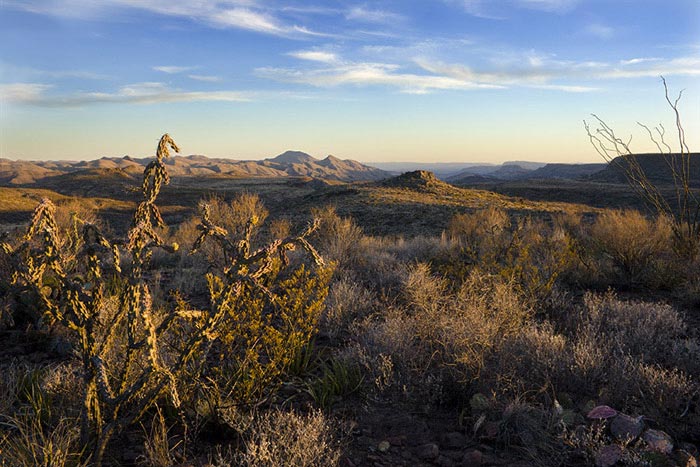
The Chihuahuan Desert is… Remote, Exotic, and Largely Unknown. Encompassing over 200,000 square miles, it is the largest desert in North America. It stretches from deep within central Mexico to West Texas, southern New Mexico, and southeastern Arizona.
It is one of the most biologically diverse arid regions on earth. Sheltered by large mountain ranges from other regions such as the Sonoran Desert, it is home to an extraordinary number of endemic species including Mexican prairie dogs, wild American bison, and pronghorn antelope.
This area has been continuously inhabited since the end of the last ice age over 10,000 years ago. The first Spaniards came to the already long-established town of Presidio in 1535, 67 years before the first pilgrim ship left Europe. Yet today, it is one of the least-inhabited and least-visited regions of the U.S., its scenic grandeur seemingly untouched by man.
.jpg)
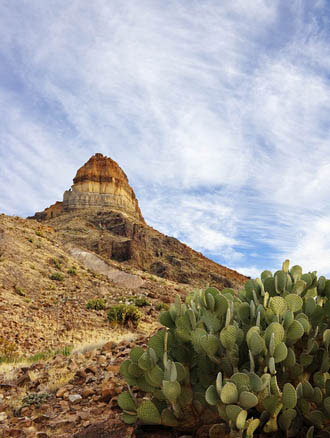
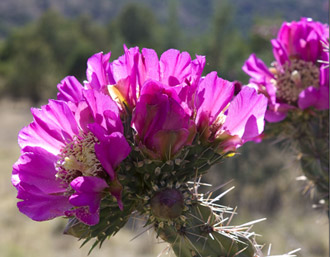
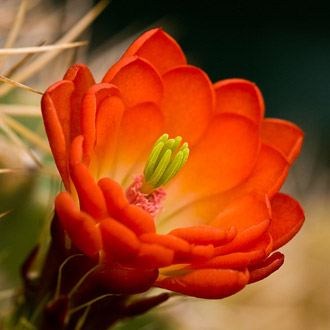
The Beauty Of The Chihuahuan Desert
The Chihuahuan Desert’s isolation keeps its popularity as a tourist attraction low. But the area’s isolation is a great part of its charm and there are few other places in the U.S. where you can sit atop a cliff where only a handful of people have ever been and absorb a silence so absolute that your own breathing and heartbeat dominate the aural landscape.
Such silence and solitude are priceless. The entire area is a photographer’s paradise. You only need go out of your way to get here.
Those who make the effort will be rewarded with scenery that is utterly unique. No other desert is as heavily covered with vegetation. Plants cover the llanos, the hillsides, and the mesa tops with a visual ‘blanket’ that makes the desert look uniquely “soft.” When it rains, the area becomes incredibly green.

In winter, the grasses turn a golden brown and the entire landscape is painted in caramel colors.
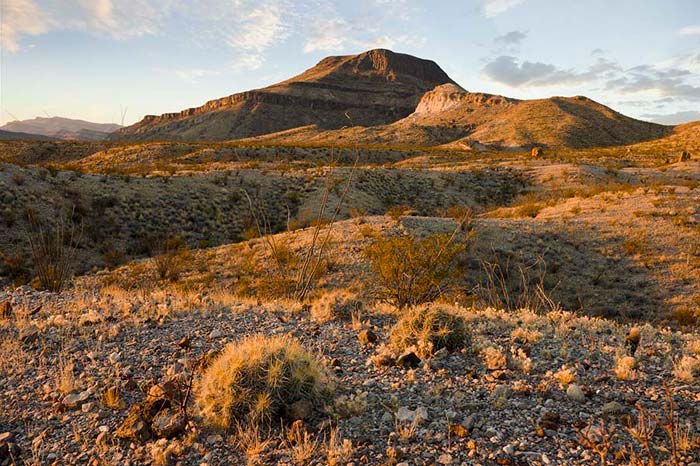
Texas hosts the three largest parks in the Chihuahuan Desert – the Guadalupe Mountains National Park, Big Bend National Park, and the Big Bend Ranch State Park.
Your first visit should probably be to the Big Bend National Park. It is the most accessible and requires the least physical effort to explore.
The park runs a small motel located atop the Chisos Mountains and there are other accommodations just outside the western entrance in the tiny villages of Study Butte (pronounced Stoodie Beaut) and Terlingua. Roughly 100 miles north of the park in the village of Marathon you’ll find accommodations that range from the simple to downright luxurious.
The national park has the largest number of short hikes that you can easily reach from paved roads. The park is beautifully designed. Every ‘scenic overlook’ and every small trail along the way offers wonderful opportunities for nature photographers.
The Big Bend Ranch State Park is mostly accessible by vehicle though there are a few short hikes reachable from the main road. You’ll need high-clearance 4WD as the roads are beyond primitive. There are bunkhouse facilities in the park with water and showers; you can also rent a room in the ‘Big House,’ which was the Sauceda Ranch headquarters before the area became a park.
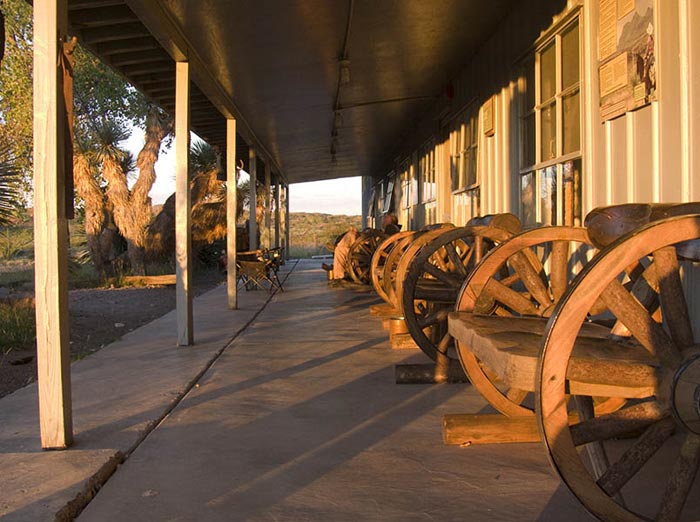
The Guadalupe Mountains National Park is mostly for the vigorous and physically fit. The trails are long, steep, and rugged but the cool montane and sub-alpine environments on the mountaintops make the climbs well worthwhile.
Regardless of which park you choose, you’ll find huge skies that are clear and sunny most of the year, soft-looking hillsides, rugged canyons, and wide open spaces.
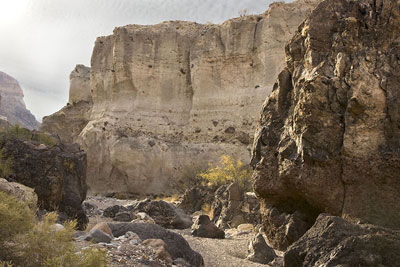
In Big Bend National, be sure to visit the Lost Mine Trail and the Windows Trail for some of the most scenic mountain views in the park. For great canyon images, visit Santa Elena Canyon, Boquillas Canyon, and Tuff Canyon. Santa Elena is the most spectacular and popular of these three.
At dawn its entrance is bathed in light like liquid gold, and the reliable water there makes it easier to get great shots. Tuff Canyon is easy to hike and not heavily visited. Hiking to the end takes you through 30 million years of geologic history, and the ever-present walls of tuff are eroded into strange exotic shapes that make for great images.
Boquillas Canyon is located on the far eastern boundary of the park, conveniently near “The Village” with its green, tree-covered campgrounds and the only showers in the park.
If you stay at the village, be sure to hike the short scenic loop located at the southeastern corner of the campground.
Plan on staying until after sunset, for once the sun starts going down you will not be able to drag yourself away! The vast limestone cliffs of the Sierra del Carmen to your east become brilliantly illuminated with a golden pink light that fills at least 145 degrees of your field of view. You will never forget this sight, and you will probably never take a better panorama.

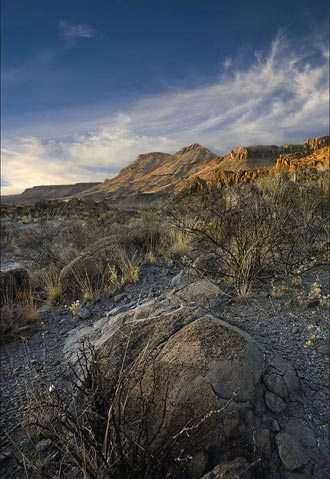
Bofecillos Mountains
Big Bend Ranch State Park
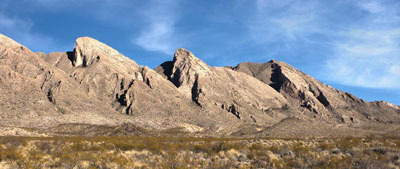
The Flatirons of the Solitario
Big Bend Ranch State Park, Texas
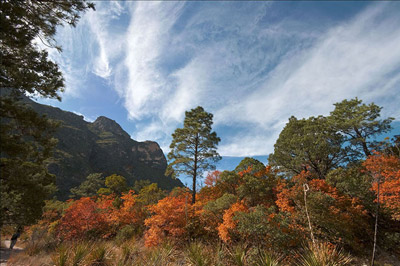
McKittrick Canyon
Guadalupe Mountains National Park
All above photos: © Gary Nored. All Rights Reserved.
At the Big Bend Ranch you will find a completely different view of the Chihuahuan Desert. The ranch is located in the Bofecillos Mountains – an area almost entirely volcanic in origin that carries the unique visual signature of volcanism.
The mountains here are razor sharp. They are never tall enough to support montane environments so the essential desert quality is never absent. Hike down the Ojito Adentro trail to the waterfall and spring at the end to photograph riparian woodlands, Maidenhair Ferns, aquatic insects, and the birds that feed on them.
Climb to the top of the Cinco Tinajas trail and scramble over to the farthest edges to photograph the “Tinajas,” permanent pools of water trapped in impermeable rock.
The Big Bend Ranch has some of the most stunning scenery in West Texas, but you’ll have to drive to see it.
Driving will take you to the most distinctive feature of the park, the famous Solitario. This enormous lacolith is circular and over 9 miles in diameter. The views from the south rim peer well into Mexico and are indescribably beautiful.
Driving down Fresno Canyon will reward you with unparalleled views of the Flatirons, a ring of 1000 ft high triangular slabs of limestone which were tilted upwards while the Solitario formed.
If at all possible, camp at least one night at any of the campsites in the canyon. Watching the Flatirons glow in the setting sun is never-to-be-forgotten experience.
Save the Guadalupe Mountains for Fall, for in this park the famous McKittrick canyon protects huge orphaned stands of Houndstooth Maple, and like most maples, they turn glorious shades of red and yellow with the change of the season. The hike is about 6 miles and worth every step, for the trees grow mostly at the upper end of the canyon.
A shorter hike to Devil’s Den is equally spectacular but involves quite a bit of scrambling to get through. Check ahead of time to catch the trees at their best.
Regardless of which park you choose, timing will determine the best photographic opportunities. Wildflower lovers should come in early spring – March through May – to see cacti in bloom.
They’re better in wet years, but you’ll find cacti in bloom almost any year you visit. If annuals are your favorite flowers, visit in early summer, or wait for the annual monsoons which tend to arrive mid- to late-summer.
Many desert plants are opportunistic bloomers so you’ll want to arrive during or shortly after the rains. The monsoons often bring dramatic, violent storms – manna to photographic storm chasers.

Peace-loving landscape photographers should consider a winter trip. The winters here are relatively mild, and the dry vegetation creates visual effects you will find nowhere else in America.
Regardless of where you go and when, remember that this is a desert. There is little to no water anywhere. Water is the most important thing in your life when you’re in the desert. You must have water with you at all times! Carry several gallons with you in your car.
If you’re going to be out all day, carry as much as you can, and drink it. The standard rule of thumb for hot weather is one gallon per person per day. This standard is not over-generous. Remember, if you start to feel thirsty, you are already dehydrated. Please don’t let that happen.
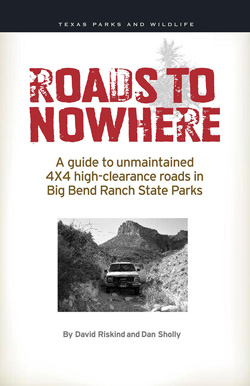
© Gary Nored. All Rights Reserved.
No matter what time of the year you visit, always wear long trousers, long-sleeved shirts, wide-brimmed hats and sunglasses. As hot as it may feel walking around like this, it is nothing as hot as you’ll be without it.
Look at the people who live here. You will never see one lightly clothed. Wear heavy boots and get a pair of snake leggings if you will be hiking in tall grass. Snake bites are rare, and almost never fatal, but they are extremely painful and special treatment is expensive.
If you’re planning on backroad driving, I would suggest downloading “Roads to Nowhere” from the Texas Parks and Wildlife website. Read the book and follow all the safety precautions listed. Hopefully you won’t need that extra spare tire or high-rise jack, but you’ll regret not having them if you do.
One other note of caution: the Chihuahuan Desert is addictive. The experiences you have here, and the images you take home will be unlike anything you’ve ever had before, and you’re going to want more, and more, and more …
by Gary Nored

Leave a Reply